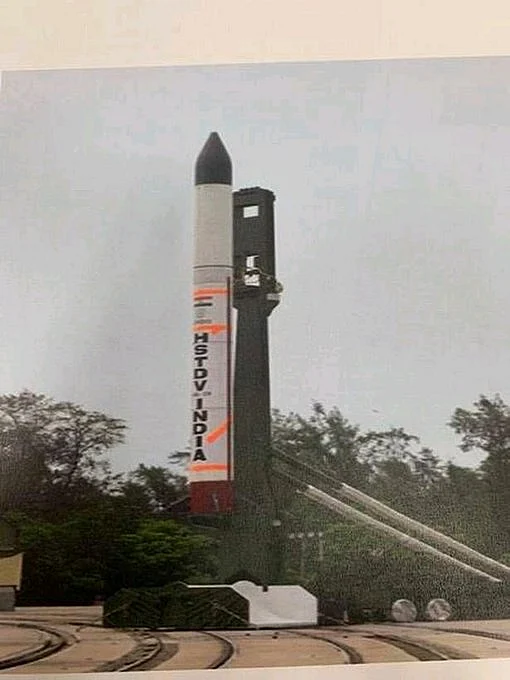India gatecrashes into exclusive club of countries possessing hypersonic weapons at a crucial time
A hypersonic missile can target an individual building, enter it through the window or hit a single vehicle in a convoy with precision

Just as tension between India and China started escalating again at the Ladakh border, India announced it had gatecrashed into yet another exclusive club, that of countries possessing hypersonic weapons. So long it had three members – the United States, Russia and China. What India has achieved now is not the making of a hypersonic cruise missile but the technological ability to do so in a short time.
What is a hypersonic missile? One that has a speed of Mach 6 or six times the speed of sound, that is, 4,566 miles per hour (mph). What was fired on Monday was a Hypersonic Technology Demonstrator Vehicle or HSTDV, the first step to making a hypersonic missile. The news must have caused a furrow in the forehead of China’s defence experts. A hypersonic missile can target an individual building, enter it through the window or hit a single vehicle in a convoy with precision.
Coming back to Ladakh again, the scope of a negotiated settlement is getting narrower and narrower. At the meeting of the Defence Ministers of India and China, held on the sidelines of the Shanghai Cooperation Organization’s defence ministers meeting in Moscow on September 4, both sides stuck to their respective positions.
Rajnath Singh told his Chinese counterpart Wei Fenghe that India would not cede any territory of India to China and defend its sovereignty at all costs. The Chinese response was that the responsibility for the border stand-off lies entirely with India and the Chinese army will “safeguard China’s sovereignty and territorial integrity.” In simple language it means that China will not vacate the large chunks of Indian territory it has occupied. After this, there is hardly any possibility of a negotiated settlement of the border dispute.
As things stand, India has been left with two options. One is to accept the Chinese occupation of Indian territory as an unalterable fait accompli and ensure that the Chinese do not grab more Indian land. The other is to resort to force to take back the land occupied by China, whatever the consequences. The decision will have to be taken by the political leadership of the government and not by the army. Maybe, Prime Minister Narendra Modi is hesitating to go for the military option against China when the Indian economy has been badly hit by the corona pandemic.
The Indian response to China’s obduracy has also started changing accordingly. Now China is complaining that India is crossing the LAC and firing “warning shots.” From reactive, India has become pro-active
The Chinese have mounted a psychological operation (psy-op) against India and warned that in a war with China India will be roundly defeated. Foreign strategic experts do not agree. Rather, their assessment is that as far as terrain and logistics in eastern Ladakh are concerned, India will be a force to reckon with and is quite likely to get the better of China.
Should it come to war, it will only expose China’s expansionist ambitions and lead to its further isolation in the comity of nations. Several nations have stated that they stand with India. Russia has also refrained from openly supporting China. But it has said it will not sell any arms and ammunition to China’s bosom friend Pakistan. China must have taken note of it and understood its implications.
India under Jawaharlal Nehru or even under Indira Gandhi did not enter into a military competition with China. But things have drastically changed since then. India can ignore China as a military power only at its own peril. Chinese leaders, from Mao Zedong to Xi Jinping, have one thing in common. They do not consider human life as valuable. Zhisui Li, Mao’s personal physician for 22 years, has recorded an incident in his book ‘The Private Life of Chairman Mao’.
Jawaharlal Nehru had visited China in 1954 and met Mao. Mao told him: “The atom bomb is nothing to be afraid of. China has many people. They cannot be bombed out of existence. If someone else can drop an atomic bomb, I can too. The deaths of ten or twenty million people is nothing to be afraid of.” Nehru was shocked. This mentality of the Chinese leadership has not changed till this day.
Another characteristic of the top Chinese leadership is that they are distrustful of everyone except those who are totally loyal to them. Li has noted that Mao was “convinced” that Edgar Snow, the American author who wrote ‘Red Star Over China’ and was a great admirer of Mao and the new China “was a CIA agent and a conduit of information to the highest levels of the American government.” The flip side of this is that the Chinese leadership is also equally unworthy of trust.
The mobilization of massive troops, tanks, heavy artillery and missiles by China on the Ladakh border does not bespeak of peaceful intents. While trying to avoid a military confrontation, India must be prepared for the worst. To be forewarned is to be fore-armed.
Follow us on: Facebook, Twitter, Google News, Instagram
Join our official telegram channel (@nationalherald) and stay updated with the latest headlines
